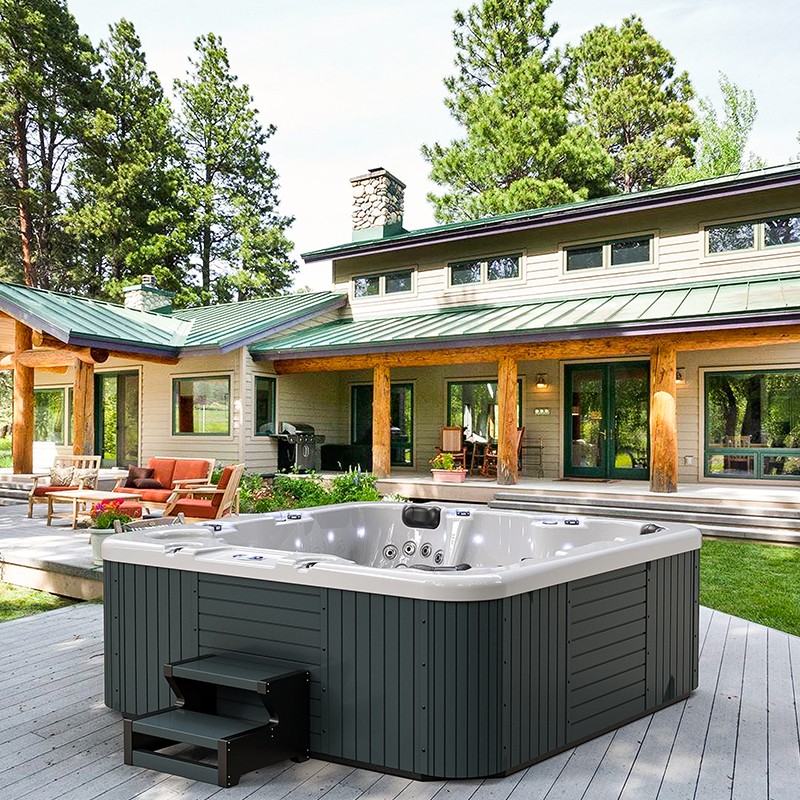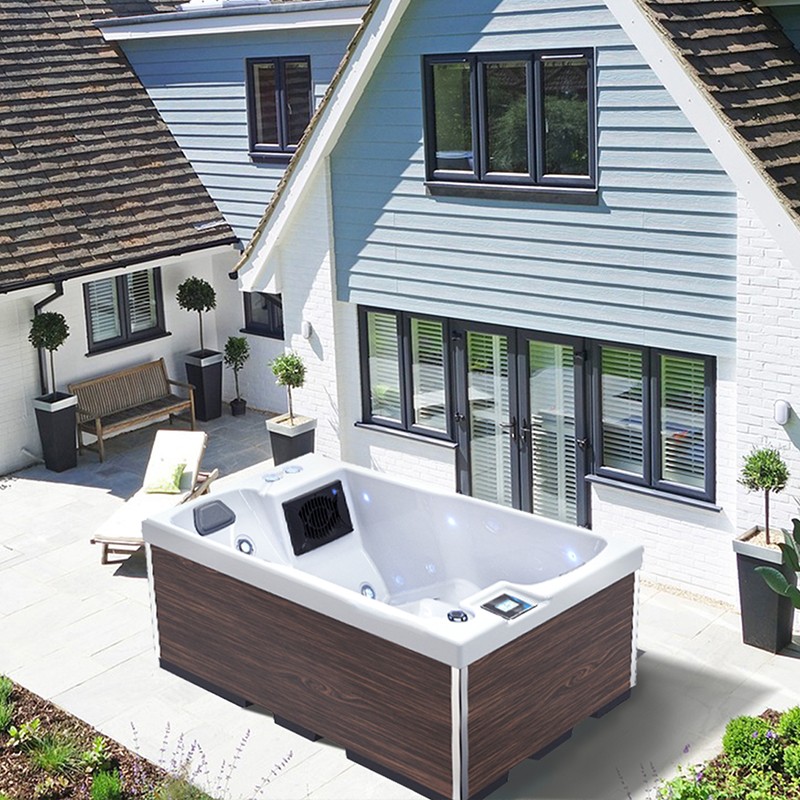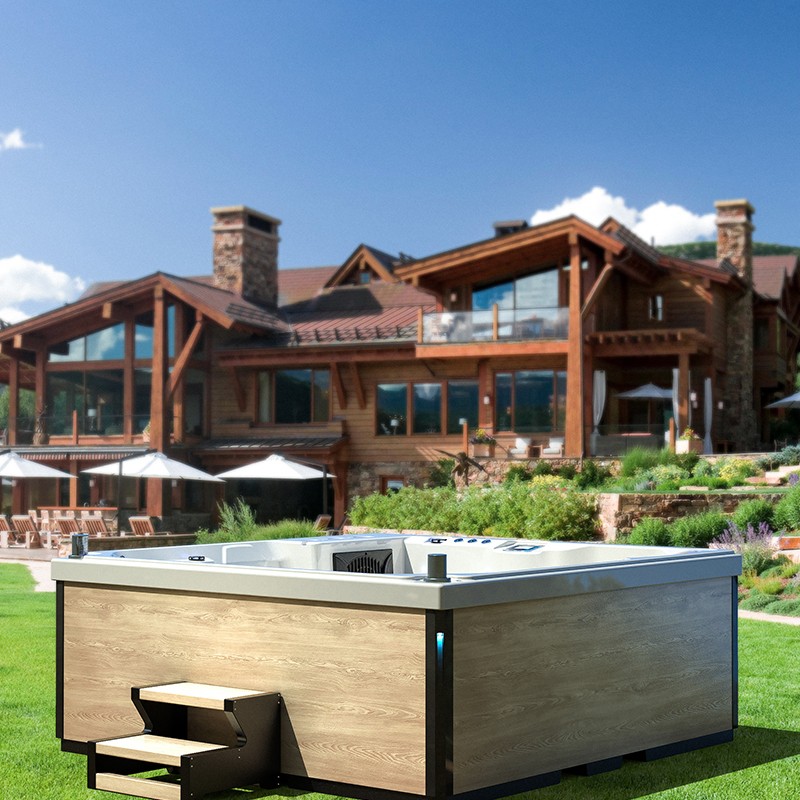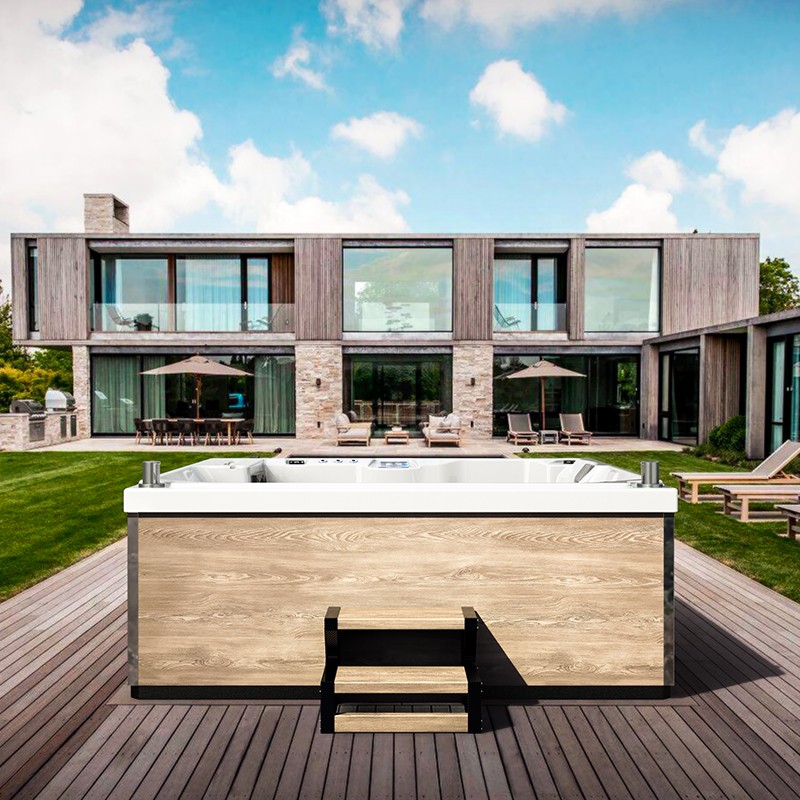
How to Renovate an Acrylic Spa Tub?
2025-10-20 15:35Acrylic spa tubs are widely used in homes and high-end bathing facilities due to their aesthetically pleasing appearance, smooth texture, excellent heat retention, and relative lightness. However, over time, the acrylic surface may develop scratches, discoloration, stains, limescale, and even minor cracks. These problems not only affect the appearance but also the user experience. In these cases, rather than replacing the entire tub, a scientific and rational renovation is often the better option.
This article will provide a systematic and detailed professional explanation of how to renovate an acrylic spa tub, covering key aspects such as pre-renovation preparation, surface treatment, restoration steps, tools and materials, sanding and polishing, renovation precautions, and ongoing maintenance.

A Brief Overview of Acrylic Spa Tub Material Properties
Before discussing renovation methods, it's important to understand the material characteristics of acrylic spa tubs to ensure an efficient and safe renovation.
1. Basic Structure of Acrylic
Acrylic spa tubs are primarily composed of two materials:
· Surface layer: Polymethyl methacrylate (PMMA), also known as acrylic plastic;
· Support layer: Mostly made of fiberglass-reinforced plastic (FRP), which provides structural support.
The surface acrylic layer is generally 3-6 mm thick and exhibits a certain degree of elasticity, strong water resistance, and chemical stability, but is not very hard and easily scratched by hard objects and discolored due to aging.
2. Types of Acrylic Aging and Wear
Common problems include:
· Minor surface scratches;
· Yellowing and loss of gloss;
· Stains and scale accumulation;
· Localized shallow cracks or cracks;
· Discoloration around nozzles or peeling coating.
Understanding these issues will help you tailor your approach to the specific needs during renovation.

Acrylic Spa Renovation Preparations
1. Site Cleaning
Before beginning to renovate an acrylic spa, clear the area around the tub and remove any items that might obstruct the work, such as:
· Towels and toiletries;
· Decorative objects or glassware;
· Electrical equipment or extension cords.
· Ensure the floor is dry and flat to facilitate the work.
2. Drain the tub
Drain the tub thoroughly and wipe it clean to prevent moisture from interfering with sanding, gluing, and other processes.
3. Required Tools and Materials
The following are commonly used tools and materials for renovating an acrylic spa:
· Fine-grit sandpaper (600, 1000, 1500 grit);
· Acrylic repair compound;
· Polishing compound or acrylic polish;
· Sponge sander or electric polisher;
· Neutral detergent;
· Soft cloth or lint-free cloth;
· Rubber scraper and gloves.
If crack repair is required, you will need:
· Fiberglass sheets;
· Epoxy glue;
· Hardener.

Acrylic spa bathtub renovation steps detailed
1. Step 1: Deep cleaning and surface descaling
Thoroughly clean the acrylic spa bathtub with warm water and a neutral detergent:
· Clean the surface thoroughly with a soft cloth, especially around the nozzles and crevices;
· If scale is present, soak the area with a 1:1 mixture of white vinegar and water before wiping;
· Avoid using harsh, corrosive cleaners containing chlorine, ammonia, or ethanol.
After cleaning, wipe dry with a dry cloth, ensuring the bathtub surface is free of water and oil.
2. Step 2: Sanding Scratches
For minor scratches, follow the following steps:
· Sand the scratched area with 600-grit sandpaper dampened with water, using slow, circular motions in the same direction.
· Next, use 1000-grit and 1500-grit sandpaper to gradually refine the surface.
· After drying, inspect the surface for smoothness to confirm the scratch is largely removed.
· Keep the surface moist to prevent dry sanding from damaging the acrylic due to high temperatures.
For larger scratches, use an electric sander for added efficiency.
3. Step 3: Crack Repair (If Any)
If a small crack appears in your acrylic spa, repair it immediately:
· Clean the crack and inject acrylic glue with a needle.
· Gently press both sides of the crack to allow the glue to penetrate thoroughly.
·If the crack is longer, apply fiberglass sheeting and apply epoxy resin and hardener.
· After the crack is fully cured, sand and polish.
Precisely control the amount of glue and curing time during this step to prevent secondary cracking.
4. Step 4: Polish the Surface to Restore its Gloss
Use a special polishing compound or acrylic polish:
· Apply the polishing compound evenly to a clean, soft cloth;
· Polish by hand using circular motions or using a polishing machine at a medium speed;
· Polish until the surface is smooth and glossy;
· Thoroughly remove any remaining polish with a dry cloth.
If there are minor dents, a liquid filler polish can also be used.
5. Step 5: Clean the Nozzle, Edges, and Joints
The nozzle, outlet, and control panel of the acrylic spa also require special attention:
· Use a cotton swab to clean small crevices;
· If hard water crystals are present, wrap a cloth dampened with white vinegar for 5-10 minutes before wiping;
· Check the joints for loose silicone and reseal if necessary.

Special Treatments: Bathtub Coloring or Surface Renovation Coating
If the acrylic spa surface is severely faded, yellowed, or weathered, consider spray renovating:
1. Spraying Acrylic Coating
Use a spray-coated acrylic bathtub renovating coating (such as a two-component polyurethane):
· Sand the surface until it is oil-free and matte;
· Apply one to two coats evenly using a spray gun or roller;
· Avoid air bubbles;
· Allow to cure for 24 hours before use.
This procedure is recommended in a well-ventilated area, and a protective mask should be worn if necessary.
Precautions for Renovating Acrylic Spas
· Do not use harsh cleaners such as bleach or alcohol;
· Do not dry-sand: Heat buildup can soften or char the acrylic;
· Prevent accidental damage to accessories: Avoid getting polishing compound on the control panel or electronics during operation;
· Observe construction safety procedures: Wear a mask and gloves when working with chemicals;
· Thoroughly ventilate the room: If spraying, ensure good air circulation.
Post-Renovation Care and Maintenance Recommendations
1. Regular Cleaning
We recommend gently scrubbing with a neutral detergent weekly to prevent stains and maintain brightness.
2. Keep Dry
Drain and wipe dry after use to prevent long-term water stains and scale buildup.
3. Avoid Impact with Heavy Objects
Do not knock or place hard metal objects in the bathtub to prevent further scratches.
4. Check Seals
Regularly check the silicone seals on the nozzle, connection, and drain outlet to ensure they are intact. This prevents moisture from entering the internal structure and causing malfunctions.
What makes your Factory one of the largest in China?
Covering 45,000 square meters with advanced assembly lines, Guangzhou HuanTong Industrial is among the largest spa Manufacturers in the region. We host R&D laboratories, shell forming stations, electronics testing areas, and warehouse facilities. With 20 experts and 200 employees, our Factory supports global Wholesale supply.
Buyers can Buy directly from this large-scale Company, gaining advantages in Prices, timely Quotes, and supply chain strength. Our scale allows us to run Promotions and Discounts without compromising High quality.
